#thomas holkenborg
Link
0 notes
Text
Legendara productie “Godzilla x Kong: Un Nou Imperiu” are premiera din 29 martie pe marile ecrane
Regizorul Adam Wingard prezintă reîntoarcerea pe marile ecrane a legendarelor personaje într-o poveste colosală, plină de aventură și acțiune, “Godzilla x Kong: Un Nou Imperiu”, o producție marca Legendary Pictures de la Warner Bros. Pictures. Filmul este distribuit de Vertical Entertainment și are premiera pe marile ecrane din România începând din 29 martie.
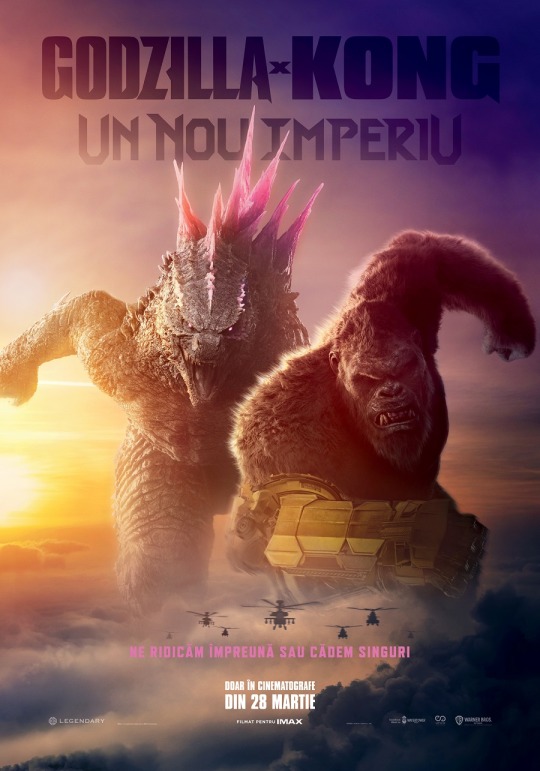
Bătălia legendară continuă! Universul monștrilor urmărește continuarea explozivei confruntări dintre neînfricatul Godzilla și atotputernicul Kong care, de data aceasta, trebuie să învingă o amenințare necunoscută, ascunsă adânc în lumea noastră și extrem de periculoasă pentru existența tuturor. “Godzilla x Kong: Un Nou Imperiu” explorează și mai mult istoria celor doi Titani și originile lor, misterele de pe Insula Craniilor, dar și secretul legăturii dintre aceste creaturi extraordinare și oameni.
Regizorul filmului este din nou Adam Wingard. Din distribuție fac parte actorii: Rebecca Hall (“Vicky Cristina Barcelona”, “Iron Man 3”), Brian Tyree Henry (“Joker”), Dan Stevens (“Frumoasa și Bestia”), Kaylee Hottle (“Godzilla vs. Kong”), Alex Ferns (“Batman”) și Fala Chen (“Shang Chi și Legenda Celor Zece Inele”).
Scenariul este semnat de Terry Rossio (“Godzilla vs. Kong”, seria “Pirații din Caraibe”), Simon Barrett (“You’re Next”) și Jeremy Slater (“Moon Knight”), după o poveste de Rossio, Wingard și Barrett, bazat pe “Godzilla”, personajul deținut de TOHO Co., Ltd. Filmul este produs de Mary Parent, Alex Garcia, Eric Mcleod, Thomas Tull și Briand Rogers. Producătorii executivi sunt Wingard, Jen Conroy, Jay Ashenfelter, Yoshimitsu Banno și Kenji Okuhira.
Și de această dată, Wingard colaborează cu directorul de imagine Ben Seresin (“Godzilla vs. Kong”), designerul de producție Tom Hammock (“Godzilla vs. Kong”), editorul Josh Schaeffer (“Godzilla vs. Kong”), designerul de costume Emily Seresin (“Top of the Lake”). Compozitorii sunt Tom Holkenborg (“Godzilla vs. Kong”) și Antonio Di Iorio (“Godzilla vs. Kong”).

Warner Bros. Pictures și Legendary Pictures prezintă o producție Legendary Pictures, un film de Adam Wingard, “Godzilla x Kong: Un Nou Imperiu”. Filmul ajunge în premieră pe marile ecrane începând din 29 martie și este distribuit la nivel național de Vertical Entertainment.
0 notes
Text
Godzilla e Kong - Il nuovo impero

✔️ 𝐒𝐓𝐑𝐄𝐀𝐌𝐈𝐍𝐆 𝐎𝐑𝐀 𝐐𝐔𝐈 ▶ https://megavids.online/movie/823464/godzilla-x-kong-the-new-empire.html?language=it-tumblrrah
:: Trama Godzilla e Kong - Il nuovo impero ::
Secondo la sinossi ufficiale rilasciata da Warner Bros. e Legendary, il film seguirà un'avventura che contrappone Kong e Godzilla a "una colossale minaccia sconosciuta nascosta nel nostro mondo, sfidando la loro stessa esistenza", e approfondirà ulteriormente "le storie di questi Titani, le loro origini e i misteri di Skull Island e oltre, svelando al contempo la mitica battaglia che ha contribuito a forgiare questi esseri straordinari e li ha legati all'umanità per sempre."
Nel marzo 2019, il produttore Alex Garcia dichiarò che la Legendary Pictures voleva produrre più film del MonsterVerse se le pellicole Godzilla II - King of the Monsters (2019) e Godzilla vs. Kong (2021) avessero avuto successo.[2] Nel febbraio 2021, il regista Adam Wingard commentò il futuro del MonsterVerse affermando di sapere "dove potremmo andare potenzialmente con i film futuri", ma affermando tuttavia che la saga venne creata "in una certa misura" per condurre verso Godzilla contro Kong.[3] Ha anche aggiunto che il MonsterVerse fosse ad un "bivio", dichiarando: "È davvero il punto in cui il pubblico deve fare un passo avanti e votare per più di queste cose. Se questo film sarà un successo ovviamente andranno avanti [con altri film]".[3]
Godzilla vs. Kong è uscito il 24 marzo 2021 e fu un successo sia di botteghino sia di visualizzazioni in streaming durante la pandemia di COVID-19: ha incassato 470 milioni di dollari in tutto il mondo è divenne il film più visto su HBO Max,[4] nonché il film più piratato del 2021.[5] Il 4 aprile 2021, il CEO della Legendary Josh Grode dichiarò che lo studio aveva "una serie di idee" per altri film. Lo stesso giorno, l'hashtag #ContinueTheMonsterVerse divenne virale su Twitter e fu supportato anche da Jordan Vogt-Roberts, regista di Kong: Skull Island (2017).[6] Il 27 aprile 2021, The Hollywood Reporter ha dichiarato che la Legendary stava "prendendo tranquillamente provvedimenti per estendere la serie in uno o più episodi", mentre negoziava con Wingard per tornare alla regia. Vennero prese in considerazione varie idee per un seguito, tra cui Son of Kong come titolo potenziale, omonimo al film del 1933.[7] Nell'agosto 2021, lo sceneggiatore Max Borenstein affermò che "ci saranno alcune nuove puntate interessanti in arrivo" dopo il successo di Godzilla vs. Kong.[8]
Il 20 marzo 2022, è stato annunciato che le riprese di un sequel sarebbero dovute iniziare nel corso dell'anno a Gold Coast, Queensland, e in altre località nel Queensland sudorientale.[9] Nel maggio 2022, è stato annunciato che Wingard sarebbe tornato alla regia e che Dan Stevens era stato scelto come protagonista. Wingard e Stevens avevano già lavorato insieme in The Guest (2014).[10] Il 19 maggio 2022, Production Weekly riferì che il titolo provvisorio della pellicola era Origins.[11] Il 30 giugno 2022, è stato rivelato che Mary Parent, Alex Garcia, Eric McLeod, Brian Rogers, Thomas Tull e Jon Jashni sarebbero tornati come produttori. Il 1 luglio 2022, la Toho ha confermato che il film avrebbe avuto come protagonista Godzilla.[12]
Nell'agosto 2022, Warner Bros. Pictures e Legendary hanno annunciato una nuova trama e che Rebecca Hall, Brian Tyree Henry e Kaylee Hottle avrebbero ripreso i loro ruoli da Godzilla vs Kong, e che Fala Chen, Alex Ferns e Rachel House si sarebbero uniti al cast.[13] È stato anche rivelato che Wingard avrebbe collaborato ancora una volta con lo scenografo Tom Hammock, il montatore Josh Schaeffer, il compositore Tom Holkenborg, e che Terry Rossio era tornato per scrivere la sceneggiatura con Jeremy Slater e il frequente collaboratore di Wingard, Simon Barrett.[14] Michael Dougherty e Zach Shields, entrambi co-scrittori di Godzilla II - King of the Monsters e Godzilla vs. Kong sono stati accreditati per "materiale letterario aggiuntivo" fuori schermo con James Ashcroft, Eli Kent e Nicole Perlman.
Un film (in Italiano anche pellicola) è una serie di immagini che, dopo essere state registrate su uno o più supporti cinematografici e una volta proiettate su uno schermo, creano l'illusione di un'immagine in movimento.[1] Questa illusione ottica permette a colui che guarda lo schermo, nonostante siano diverse immagini che scorrono in rapida successione, di percepire un movimento continuo.
Il processo di produzione cinematografica viene considerato ad oggi sia come arte che come un settore industriale. Un film viene materialmente creato in diversi metodi: riprendendo una scena con una macchina da presa, oppure fotografando diversi disegni o modelli in miniatura utilizzando le tecniche tradizionali dell'animazione, oppure ancora utilizzando tecnologie moderne come la CGI e l'animazione al computer, o infine grazie ad una combinazione di queste tecniche.
L'immagine in movimento può eventualmente essere accompagnata dal suono. In tale caso il suono può essere registrato sul supporto cinematografico, assieme all'immagine, oppure può essere registrato, separatamente dall'immagine, su uno o più supporti fonografici.
Con la parola cinema (abbreviazione del termine inglese cinematography, “cinematografia”) ci si è spesso normalmente riferiti all'attività di produzione dei film o all'arte a cui si riferisce. Ad oggi con questo termine si definisce l'arte di stimolare delle esperienze per comunicare idee, storie, percezioni, sensazioni, il bello o l'atmosfera attraverso la registrazione o il movimento programmato di immagini insieme ad altre stimolazioni sensoriali.[2]
In origine i film venivano registrati su pellicole di materiale plastico attraverso un processo fotochimico che poi, grazie ad un proiettore, si rendevano visibili su un grande schermo. Attualmente i film sono spesso concepiti in formato digitale attraverso tutto l'intero processo di produzione, distribuzione e proiezione.
Il film è un artefatto culturale creato da una specifica cultura, riflettendola e, al tempo stesso, influenzandola. È per questo motivo che il film viene considerato come un'importante forma d'arte, una fonte di intrattenimento popolare ed un potente mezzo per educare (o indottrinare) la popolazione. Il fatto che sia fruibile attraverso la vista rende questa forma d'arte una potente forma di comunicazione universale. Alcuni film sono diventati popolari in tutto il mondo grazie all'uso del doppiaggio o dei sottotitoli per tradurre i dialoghi del film stesso in lingue diverse da quella (o quelle) utilizzata nella sua produzione.
Le singole immagini che formano il film sono chiamate “fotogrammi”. Durante la proiezione delle tradizionali pellicole di celluloide, un otturatore rotante muove la pellicola per posizionare ogni fotogramma nella posizione giusta per essere proiettato. Durante il processo, fra un frammento e l'altro vengono creati degli intervalli scuri, di cui però lo spettatore non nota la loro presenza per via del cosiddetto effetto della persistenza della visione: per un breve periodo di tempo l'immagine permane a livello della retina. La percezione del movimento è dovuta ad un effetto psicologico definito come “fenomeno Phi”.
1 note
·
View note
Quote
Besides the Man of Steel theme for Superman and the theme for Wonder Woman, which I have given a new spin, all the other themes for this movie are brand new. Some of them I did the groundwork on four years ago, but as you grow as a composer, you look at what you did and maybe have a better way of doing it now or a better idea. It was inspiring. I would get an idea in my downtime and think, ‘Oh, let’s rework this thing. Let’s do that.’ Because I knew for a while that this was coming, I had the time and space to shape it into its best possible form.
Different characters have different musical statements to those same characters in the past. Much like their stories in the comics, they change and evolve over the years. So, what was a great theme for Superman in the 70s doesn’t mean that it is the right theme for Superman in 2013. When the director takes on a superhero character, and when a composer takes on the superhero character, they should do what feels right inside them.
You should come up with a theme that inspires you for that character. I think that is important in the development of these movies. If Mad Max gets remade in 25 years, I’m not expecting people to do something similar to what I did for Fury Road, you know? Give it your take.
Thomas “JunkieXL” Holkenborg on musical evolution and Justice League: Director’s Cut
64 notes
·
View notes
Photo

Lonesome Cruiser.
Blockbuster composer Tom Holkenborg, aka Junkie XL, talks to Gemma Gracewood about composing for titans, his pride in Dutch cinema, friendship with George Miller and longing for Olivia Newton-John. Plus: his Letterboxd Life in Film and why he’s selling his prized collection of recording gear.
It has been a spectacular spring for Tom Holkenborg, the Dutch musician also known as Junkie XL, who has crafted the scores for multiplex fare such as Mad Max: Fury Road, Deadpool, Terminator: Dark Fate, Sonic the Hedgehog and the upcoming zombie banger Army of the Dead. Only weeks apart, two blockbusters landed on screens with his sonic stamp all over them: Adam Wingard’s Godzilla vs. Kong and Zack Snyder’s re-realized Justice League.
Thankfully, the Godzilla vs. Kong score was complete by the time the Justice League telephone rang. Holkenborg—who had lost the Justice League gig along with Snyder the first time around—knew the Snyder cut was coming; he had closely watched the growing calls for it online. “Zack and I already started talking in 2019. He’s like, ‘What if we were to finish this? What would it take?’ Those conversations turned to ‘Well, how many recording days potentially do you need and how much of an orchestra do you potentially need?’ Finally, somewhere in April 2020, that’s when that phone call came: ‘Okay, light’s green, start tomorrow, and start running until it’s done because it’s four and a half hours’.”
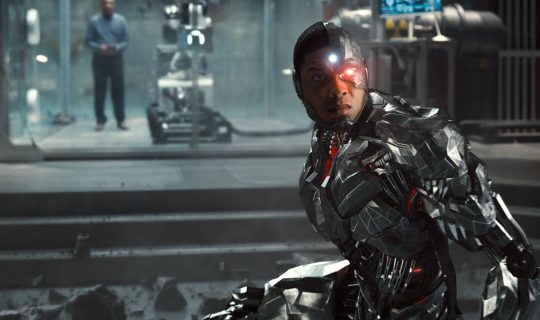
Ray Fisher as Cyborg in ‘Zack Snyder’s Justice League’.
Holkenborg approaches the titanic task of blockbuster film scoring with an engineer’s mindset: “Building a fantastic, huge house with 20 bedrooms and the dance hall and the kitchen… You’re not going to start by building the third bathroom for the third guest room, right?” Once he has identified the scenes that are most important to his directors—for Snyder, they included the introduction of Cyborg, three fight set-pieces, and a scene of The Flash running that comes towards the end of the film—the composer identifies instrumental “colors” in order to build a theme around each character. Then he holds some of those colors back, theorizing that “if you want like an, ‘Oh!’ experience by looking at a painting that has a huge amount of bright yellow in it, it’s way more successful to see fifteen paintings in front of it, where yellow is absent.”
The Godzilla vs. Kong score satisfies Holkenborg’s life-long love of both characters. “I don’t have a preference for either one. I love them both for various different reasons.” Their respective histories fascinate him: Godzilla as a way to make sense of Japan’s nuclear fall-out, and Kong as a gigantic spectacle that ended up attracting the sympathies of the audiences he was supposed to scare. Even when the science makes no sense (“what the fuck are plasma boosters, anyway?!”), Holkenborg is still happy to wax lyrical about the emotional depth of Kong’s stories, the elaborate concepts of the Godzilla-verse, and his musical approach to the pair—dark, moving brass for Godzilla, with synthesized elements “because he is a half-synthesized animal”, and a more organic, complex orchestration for Kong, featuring “one of the world’s bigger bass drums”.

Adam Wingard’s ‘Godzilla vs. Kong’.
All of this seat-shaking bombast is composed on an “insanely massive sound system” in Holkenborg’s small home studio (though he reassures pandemic-stricken film lovers that he has recently seen both Godzilla vs. Kong and Justice League on his laptop—and “really enjoyed watching it like that”). The process, he says, was “pretty intense”, but only in terms of the sheer amount of score needed. Composing in quarantine was not much different from his usual workflow. “I’m a pretty lonesome cruiser anyway. Composing, by nature, is like a solo exercise—obviously with assistance.”
Like many creatives (Bong Joon-ho recently told a film studies class that he is up at 5:00am most days to watch a movie), Holkenborg is an early riser, waking by 4:00am. “I’m super sharp between like 4 or 5:00am and 9:00am, so I like to do a lot of creative work in that slot.” He takes care of business until mid-afternoon, when another creative spurt happens. “And then I have another batch of calls usually to make, and then around 8:30pm, I’m going to retire for the rest of the day and just chill out a little bit and watch stuff that I want to see, read things that I want to read. Right now I’m studying Portuguese.” By 10:30pm, he’s asleep. “And then at three o’clock I get up.” (Needless to say, Holkenborg’s children are no longer small.)
The pandemic simplified a lot of things for a lot of people: for Holkenborg, it has been a moment to tidy up the physical side of his work. In November last year, he opened an online shop to divest the bulk of his gear—synths, pedals, guitars, drum machines and much more—that he has been collecting since the late 1970s. When friends told him he’d regret it, he disagreed. “At some point I’m going to die. I can’t take them to the afterlife. I also found out I don’t need them. I love to have them around, but I don’t need them.”

Tom Holkenborg with the bass drum used in the ‘Godzilla vs. Kong’ score.
It certainly solves the question of what he’d take if his house was on fire. “The hard drives with sounds and music over the last 40 years, 45 years, that’s hard to replace. So, that would be it. I’m just thinking about things that are absolutely irreplaceable and there are not that many, really.” Alas, it’s bad news for that bass drum. “I can’t take that with me when the house is on fire. Unfortunately, it’s going to make the house burn longer.”
Anyone who has interviewed or spent time with Holkenborg will agree: he may be a lonesome cruiser, but he is also personable, funny, loves to settle in for a chat. As he lights his second or third cigarette in readiness for his Life in Film questionnaire, I’m curious about his relationships with the esteemed filmmakers he has worked with—who include his mentor, Hans Zimmer, directors Sir Peter Jackson, Tim Miller, Robert Rodriguez and, especially, Fury Road’s George Miller.
The story of how Holkenborg scored Mad Max: Fury Road bears retelling: that George Miller did not want a soundtrack (“he was convinced that the orchestration of sounds of the cars would be enough to carry the whole movie”), that Holkenborg was only brought in to create a little something for the Coma-Doof Warrior’s flame-throwing guitar, that they hit it off, the job grew, and grew, into a score that covers almost the entire film.

The Coma-Doof Warrior in ‘Mad Max: Fury Road’ (2015).
What is his best memory of Fury Road? “Well, obviously, when I saw the movie for the first time and I was like ‘what the hell am I looking at?’,” he laughs. “What I mostly look back on is the friendship that I developed with George and the film school one-on-one that I got admitted to, while being paid at the same time, to study with somebody like him. We would talk all night about all kinds of things and nothing, because that really defines our relationship so much—a joint interest in so many different things.”
Happily, Holkenborg and Miller are working together again, on Three Thousand Years of Longing. “It’s really great to be in that process with him again. It’s just like about pricking each other with a little needle. It’s like, ‘Oh, why are you saying that?’ We do that with each other to keep each other sharp. ‘Oh, but if you’re doing this, I’m going to be doing that.’ And then, ‘Oh, if you’re doing that, I’m going to be doing this.’ So it’s really interesting.”
What is your favorite Godzilla film?
Tom Holkenborg: 1989’s Godzilla vs. Biollante. It’s a very obscure one where he’s basically fighting a giant rose. Let’s not look for the logic there.
Why has that particular Godzilla captured your heart?
It’s so corny. Yeah. Mothra vs. Godzilla is also great. Mothra looks like a very bad Arabian carpet that was imported through customs and it got delivered by FedEx completely ruined and then laid outside for like four weeks in the rain.
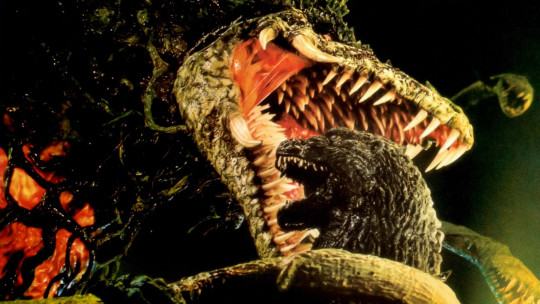
‘Godzilla vs. Biollante’ (ゴジラvsビオランテ, 1989).
What is the first film you remember seeing in a cinema?
Bambi. I was six years old, yeah.
And is there a film you have fond memories of watching with your family—a movie that became a family favorite?
Not, like, a family favorite because our opinions were too diverse for that, but the next movie that became very important to me when I was a little older was Saturday Night Fever. I thought the soundtrack was, like, groundbreaking, mind-blowingly insane. It’s not necessarily those three massive beats of the Bee Gees on there, but all these other really alternative, left-field tracks by bands like Kool & the Gang. And the way that that darker disco music played against that really dark movie about what it’s like to live in New York and become a competitive dancer, it’s incredible. And still, today, it’s one of the movies where film music and the film itself had so much impact on me, even though it’s not a traditional film score in that sense. It’s incredible.
What is the film that made you want to work in movies, given that you also have a whole musical career separate from movies? (Enjoy Junkie XL’s early 2000s remix of Elvis Presley’s ‘A Little Less Conversation’.)
For me, the move from a traditional artist into film scoring was a very slow gradual process. There’s not one movie that pushed me over the cliff. It’s just, like, all the great movies that were made. And I still have a list of obscure movies, classic movies that I need to see.
Yesterday I saw the weirdest of all, but I do want to share this: the original, uncut R-rated version of Caligula, [from] 1979. He [director Tinto Brass] was notoriously brutal and he organized orgies and had terrible torturing techniques. But it’s really weird, there’s Shakespearean actors in there, and then it goes to full-on porn sections. It’s really weird. The music is incredible. You can find it online. You will not find it anywhere [else]. I can just imagine what this must have felt like in 1979 when the film came out. Suspiria, that’s another one. It’s just like, how weird was that thing?
What is your favorite blockbuster that you did not compose?
Ben-Hur. I’ve seen that one at least 20 times.
What’s your all-time comfort re-watch?
The movie I’ve seen the most is Blade Runner. It’s just, like, it’s a nice world you’re stepping into, that fantasy. It’s not necessarily because I have memories [of] that movie that brings me back to a certain time period, it’s not that. It’s just that I just love to dwell in it. It feels a little bit like coming home. You can use it as comfort food, you can use it as, “I’m not feeling anything today”, or the opposite. You feel very great and you feel very inspired and it’s like, “Oh, let’s go home and watch that movie again.”

Terrence Malick’s ‘The Thin Red Line’ (1998).
Hans Zimmer has been an important mentor to you. Do you have a favorite of his scores?
Yes, The Thin Red Line. It’s also the filmmaking of Terrence Malick—he forces a composer to think a certain way. He would always say, “It’s too much, make it less, make it smaller, make it this, make it that.” So, A, it’s a very good movie and B, he got Hans into the right place and Hans just over-delivered by doing exactly the right things at the right time and then shining just because of that.
Who is a composer that you have your eye on and what is one of their films that we should watch next?
It’s so sad to say, but I mean, let’s call it like a retrospective discovery if you will. I’m so sad that we lost Jóhann Jóhannsson. He was a composer I felt really close to. We started roughly in the same time period making our way in today’s world. Also, Jóhann came from an artist background, even though it was a modern classical background. He made really great records, great experimentation with electronic elements, with classical instruments, and the mix between the two of them—very original way of looking at music. With Denis Villeneuve as his partner in crime the movies that they did were just mind-boggling good, whether it was Sicario or Arrival or Prisoners, and his voice will truly be missed among film composers. So people that are not super familiar with his work, I would definitely check it out.

‘Turks Fruit’ (Turkish Delight, 1973).
What is a must-see Dutch film that we should add to our watchlists?
Holland has small cinema, but it has a really rich cinema and a very serious cinema culture. Usually because there’s not enough work in film, people are serious stage performers but then they also act in movies so they understand both really well. And we’ve delivered. There’s a string of actors that make their way to Hollywood or star in well-known series, whether it’s like Game of Thrones, or what we just talked about, Blade Runner. Many directors like Paul Verhoeven, Jan de Bont, the cameraman.
And so a movie that I’d like to pick is an old movie, called Turks Fruit (Turkish Delight) from the 1970s. Rutger Hauer is a younger guy, like, this completely irresponsible guy that starts this relationship with a really beautiful young girl, and they do all these crazy things, they do a lot of drugs and they have a lot of sex. He’s just like a bad influence on her.
Then he finds out she [has] cancer and it’s terminal. And to see him deal with that, and to see him want a change, but also in that change he does a lot of bad stuff at the same time… It was a sensational movie when it came out. And it actually was directed by Paul Verhoeven, one of his earlier films. When you see it, you’re just like, ‘Why am I watching this?’ for the first 45 minutes and then it starts and it’s like, ‘whoa’. So it’s really good, even in retrospect.
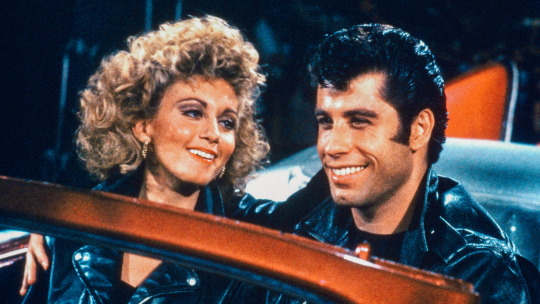
Olivia Newton-John and John Travolta in ‘Grease’ (1978).
What is the sexiest film you’ve ever seen?
When I was super young, it was definitely Grease, with Olivia Newton-John, when she was in her catsuit at the very end of it. I had her picture on my bedroom, above my bed sideways because I was only like ten years old or something. I was so in love with Olivia Newton-John. It wasn’t the film per se, it was her. Yeah, I find, personally, movies from the ’70s to be more sexy, but it has something to do with the super-loose way that people were dressed and people were behaving.
And the other one was later in life: Basic Instinct. Sharon Stone. I’m not talking about like the famous shot, right, where she crosses her legs. I’m not talking about that, but the way that she acts throughout the whole movie. It’s insane. It’s really great.
Are there any films that have scared you? Like, truly terrified you?
Yeah, I’m not a big fan because I get sucked up too much in it. The found [footage] horror movies like Paranormal Activity and things like the Japanese version of The Grudge, I cannot watch that stuff. That gets me too much. Because when I watch a film, I cannot watch it with one eye half open, the other one closed, like, ‘Okay, kind of cool, interesting’. I just get sucked into it.
Is there a film that has made you cry like no other?
Oh yeah. Multiple. Once Upon a Time in America. The Godfather. Hable con Ella (Talk to Her). Betty Blue.

Thomas Holkenborg, AKA Junkie XL.
These are the films that make you weep?
Not like on a regular basis, but I remember those were the ones that I really got hit. I’m talking particularly about the third Godfather. That whole end scene when they get out of the church and then… It’s really well-acted. So many Godfather fans that were dismissive of the film when it came out, in retrospect, ten, fifteen, 20 years later, are like, ‘it’s a really good film’. And I actually think so.
Final question. Is there a film from the past year that you would recommend, that you’ve loved?
[Long pause.] The thing is that I watch pretty much a movie a day. So, that’s like three to four hundred movies. It [has] happened so often that I watch a film and then I’m just like an hour and 45 minutes in, it’s like, ‘wait, fuck, I’ve seen this thing before’.
So, we have an app for that…
[Laughs.]
Related content
Junkie XL’s Letterboxd Life in Film list
Freddie Baker’s review of Justice League
Dutch Cinema: Danielle’s extensive list of more than 2,000 films
Letterboxd Showdown: The Perfect Score (best film scores)
The official Junkie XL Reverb Shop
Follow Gemma on Letterboxd
#godzilla vs kong#justice league#zack snyder#zack snyder's justice league#batman#superman#aquaman#cyborg#the flash#godzilla#gojira#king kong#kong#blockbuster#composer#film composer#tom holkenborg#thomas holkenborg#junkie xl#synth#synth music#synthesizer#bass drum#mad max fury road#george miller#hans zimmer#letterboxd
6 notes
·
View notes
Text
Top 5 Films of 2021:
“West Side Story” (dir. Steven Spielberg)

Cinematography by Janusz Kaminski, Screenplay by Tony Kushner, Music by Leonard Bernstein, Lyrics by Stephen Sondheim, Choreography by Justin Peck. Starring Ansel Elgort as Tony Wyzek, Rachel Zegler as María Vasquez, Mike Faist as Riff Lorton, David Alvarez as Bernardo Vasquez, and Ariana DeBose as Anita Palacio.
“Last Night in Soho” (dir. Edgar Wright)
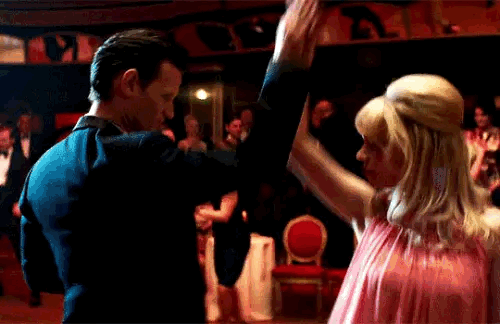
Cinematography by Chung-hoon Chung, Screenplay by Edgar Wright and Krysty Wilson-Cairns, Music by Steven Price. Starring Thomasin McKenzie as Ellie, Anya Taylor-Joy as Sandie, Matt Smith as Jack, Michael Ajao as Jon, and Diana Rigg as Ms. Collins.
“Zack Snyder’s Justice League” (dir. Zack Snyder)

Cinematography by Fabian Wagner, Screenplay by Chris Terrio, Music by Thomas Holkenborg, Starring Ben Affleck as Batman, Henry Cavill as Superman, Gal Gadot as Wonder Woman, Ray Fisher as Cyborg, and Amy Adams as Lois Lane.
“The Suicide Squad” (dir. James Gunn)
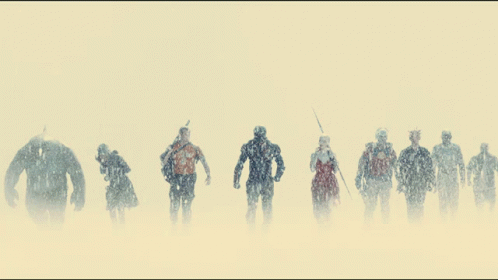
Cinematography by Henry Braham, Screenplay by James Gunn, Music by John Murphy. Starring Margot Robbie as Harley Quinn, Idris Elba as Bloodsport, John Cena as Peacemaker, Joel Kinnaman as Rick Flag, and Viola Davis as Amanda Waller.
“Ghostbusters: Afterlife” (dir. Jason Reitman)
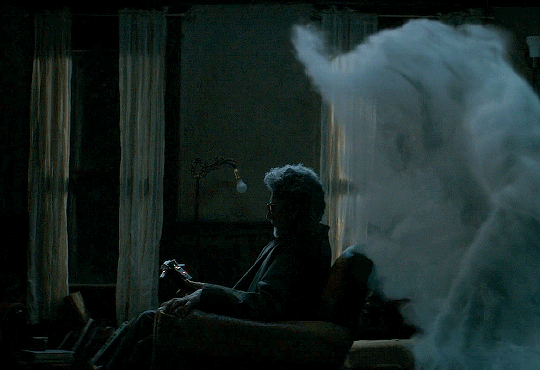
Cinematography by Eric Steelberg, Screenplay by Jason Reitman and Gil Kenan, Music by Rob Simonsen. Starring Mckenna Grace as Phoebe, Finn Wolfhard as Trevor, Logan Kim as Podcast, Carrie Coon as Callie, and Paul Rudd as Gary Grooberson.
#west side story 2021#last night in soho#zack snyders justice league#restorethesnyderverse#2021#ghostbusters afterlife
10 notes
·
View notes
Text
One film, two visions; The Justice League
It’s 2017; the highly anticipated “Justice League” film, directed by Zack Snyder, is set to be released later in the year as a continuation of the DCEU.
A blockbuster movie showcasing the biggest DC characters uniting. Taking down the ultimate super villain; bound to fulfil millions of past and present children’s, as well as current adults and elderly dreams.
Then a fork in the road appears, Snyder and his wife, Deborah, step down from the colossal project due to the incredibly woeful loss of their daughter, Autumn. News hits the fans like a brick. Resulting in Joss Whedon and the Warner Bros. Studio stepping up to the mantle. Or at least attempting to.
Whedon's theatrical cut lost Warner Bros. Pictures approximately $60 million dollars. With overall painfully negative reviews and reception. Breaking the hearts of DC fans everywhere.
4 years, campaigns, hashtags, sky banners, petitions, and billboards later; I can’t say how many of us would have predicted receiving the holy gift that is the “Snyder Cut”, in its full 4 hour running time glory (in a 4:3 ratio, which somehow adds to the grandeur). 4 years of dedicated, passionate and determined people helping in any way they can for the cause. It was a journey to behold.
A large section in Snyder’s 4 hour venture is used to build dimension and depth in the characters. Making an absolute world of a difference. Something that was sorely lacking in Whedon's cut. The film had a completely different feel and atmosphere instantly.
There's no better example of increased depth in characters than Cyborg's (Ray Fisher's) narrative. I was engaged, and intrigued by his story. In Whedon’s cut, he isn't even given a second thought. His entire backstory was cut as well as his father's important role also being stripped. His scene where he sacrificed himself in order for them to find the mother box was gone. And it took away such an important, integral part in Cyborgs story, and in the film in general I believe and also realised having seen the two movies; the complicated but delicately developing relationship between father and son. And just the whole story in general made such a difference in Snyder's cut, it really is almost indescribable the difference it made. It just felt so much more genuine and heartfelt. Like a real developed and executed narrative.
In Snyder's cut we were shown detailed flashbacks that fully fleshed out his character, his morals and his relationships. Creating a much needed deeper connection with the audience. We experience his conflicting journey to accepting his responsibility, accepting the past, the "gift he has", and his purpose in the league. Leading into receiving closure. He was given great and meaningful importance and purpose in this cut.
Similarly, Ezra Miller's Flash was too given a largely more meaningful and impactful role that left quite the impression on me. His character was light-hearted and charming but still had those important, emotionally impactful scenes. Which were painfully lacking in Whedon's cut. I was left loving Barry Allen a lot more than I already did. Barry's scenes with his wrongly convicted father were hard hitting for me. They also play a large part in making later scenes more impactful. Like his detrimental importance during the final fight. In Whedon's cut his big hero moment was saving a Russian family. The overall the inclusion of the family was superfluous and extraneous, along with the robber at the start and many other things. Not only that but Whedon's cut gave the Flash a silly, attempted comical relief role. To be fair he attempted to give everybody a comical relief role. Which hardly worked because none of the attempts were actually funny and were at time agonizing. It ultimately lacked substance and came across as almost immature. The scene where Barry went on about brunch was painful. Leading me to ask, why? Why was this so important to film Whedon?
After re-watching Whedon’s version, I had gained a new found appreciation for Snyder's representation of Barry. '"Make your own future, make your own past"; he echoes his father’s words. "Your son really was one of them, the best of the best," as his theme "At the Speed of Force" plays in the background of this pivotal moment. A powerful scene reflecting Barry's ulterior motive, doing his father proud. Which invoked many tears. And still does whenever I re-watch the scene or listen to the song. As if it were the first time experiencing it. Thomas Holkenborg's soundtrack truly amplified emotion and made the scenes much more powerful, It makes for one of the absolute best scenes in the movie; I'd say one of, if not my absolute favourite.
His job in charging up Victor was completely removed and I have to wonder why. Instead Barry was left to participate in "bug duty" (bugs being one of his fears also). Barry's role in Snyder's cut, and that one incredible scene where he broke the rule was arguably better than Whedon's Justice League as a whole.
I think the only scene in Whedon's cut involving Barry that I thought was actually meaningful was where he was faced with his first real mission. And he was confronted with his fears of "obnoxiously tall" beings. He appeared anxious and frantic. Fearful. Communicating to us his inexperience. And Batman simply told him to just "save one". To which he then, without struggle, saved them all. And was also able to participate in the final battle. The "save one" scene made those achievements more meaningful.
The scene after they won the battle, showcases the victorious team standing proud; and Barry with a sweet, goofy, golden retriever-esque smile plastered on his face. What a loveable smile.
An interesting contrast is the scene in where Barry reveals to his father his new position at an “actual job”. In Snyder’s cut the father was absolutely over the moon, shouting at the top of his lungs, "his foot is in the door!" repeatedly in excitement. It tugged at my heart strings; his shameless pride in his son. Making me wonder how he would have shown his pride if he found out Barry saved the whole Earth and humanity. We can assume Barry had that unequivocally powerful underlying thought too. Contributing to his saccharine reaction. In Whedon’s cut the reaction was softer and more timid but nonetheless a sweet moment. Barry becoming bashful.
It was a sweet touch to have Cyborg and Flash finally fist bump during that victorious scene after Victor rejected Barry's initial advance in Whedon's cut. Ezra Miller improvising that “racially charged” line, acknowledging the possible racism attached to a fist bump I assume. The whole fist bumping being "racially charged" was not included in Snyder's cut. The grave digging scene was entirely different. Which I far more preferred. It was a group excursion. With a little positive interaction between the Atlantean and the Amazonian. And funnier, more light-hearted dialogue between Barry and Victor.
Aquaman’s contrast was interesting. In Whedon’s cut he actually sought out to obtain the trident to help the league (although he was always disagreeing with them). Compared to Snyder; where he was apprehensive and had to be hesitantly persuaded by Willem Dafoe’s character Vulko (who was completely absent from Whedon’s cut). This was also an importantly established relationship by Snyder. Arthur first makes his desire to help the the team known saving them from the water rushing from Gotham Harbour. He isn't acknowledged in the theatrical cut but in Snyder's cut Diana notices and takes a moment to take in his presence (I assume?). Then Barry asks who that guy is. And of course we all know, it's Aquaman.
I particularly liked how Snyder chose to include Barry asking for Arthur's opinion on military hats. It's an odd, minimalistic thing to include - the reasoning as to why I like it. I also thought it was quite charming.
A scene I think deserves a mention is when Aquaman is first introduced, and then rejects Bruce's offer, he then makes his way back into the ocean. A farewell song is performed. This was quite early in the film and I think the voices being hauntingly beautiful, yet slightly eerie/poignant set the perfect atmosphere. A well done scene.
His overall character was also contrasting. He became a genuine hero who was proved capable of more than water powers and silly moments. Including that god-awful lasso of truth scene. In the theatrical cut he was bitter, a bit of a joke, not caring too much about the events that were unfolding. He had more of a heroes’ sense of purpose within Snyder’s cut.
Gal Gadot did not gain too much from the extra scenes. Though different to the theatrical cut, Snyder had paired her with a repetitive character establishing theme. It could be referred to as ancient lamentation music. Hauntingly beautiful. Something I could only assume would be the battle cries of the Amazonian warriors and the Amazonian warrior inside Diana. In some ways possibly over used, though I thought it was brilliant. It has a special place in my heart because I love that type of soundtrack. The almost eerie, maybe poignant but overall emotion provoking type. Especially her introduction scene where she faces off against the terrorists )which was overall better in Snyder's cut) The haunting warrior moans fade into her classic theme to create an incredible atmosphere. And that atmosphere was definitely missing in Whedon's cut, in more than just that one scene. It was also sorely lacking the lamentation music. We also didn't get that sweet interaction between Diana and the little girl.
When Diana began detailing Steppenwolf and the mother boxes past to Bruce, the cuts were very strange and abrupt/awkward in some way. And it felt silly and rushed; and I think that perfectly describes the whole film.
Whedon's cut also included uncomfortable scenes. Almost forcing characters to be funny where it was just completely out of place and character. Or just downright inappropriate. To be fair, Whedon is known for the Marvel movies in which fourth wall dimension breaking and odd self ware/ironic jokes are heavily used. One of the main reasons I don't particularly enjoy them, but rather enjoy the darker, more meaningful DC movies. I say meaningful in the way in which we are completely transported into this universe; where it's taken seriously and has obvious effects and meaning to the characters. Compared to Whedon's Marvel films in which the threat is joked about and the characters make fun at their expense.
Another negative contrast is the colour grading and overall shots. A good example is the conversation between Lois Lane and Martha Kent. In Whedon's version the colour is poppy, reminiscent of Buffy the Vampire Slayer, or The Office. As if it were an empty shell of a TV show. Lacking any artistic or symbolic aspects. Whereas Snyder's conversation between Martha Kent (who was actually Martian Manhunter) and Lois Lane was beautiful. The lighting was dim, with steam from their hot coffee creating a brilliant shot and conveying the perfect mood. Almost a piece of art. A lot of Snyder's cut looked as if it were ripped straight out of an incredible graphic novel. His talent when it comes to filmmaking is grandiloquent. Compared to Whedon's over saturated and flat scenes as if it were from a cliché sitcom.
Whedon also made the Justice League a lot more dysfunctional than it needed to be.
The scene where the team unanimously come up with the plan to revive Superman seemed really silly and lackluster in Whedon's cut. In Snyder's cut it was a genuine moment. A "wow" moment where the penny dropped. It gave me goose-bumps. The way it was implied, the explanation/analogy with the house, and then Cyborg creating a Superman visual as the team, standing around the table, stared at it in awe. All thinking the same thing. Without even having to say it (as Barry pointed out) It was a uniting moment. Whedon's version was just, disappointing. Lacking any impact at all. And it made the team seem disconnected in a way. Whereas in Snyder's scene the league's thoughts were in unison.
There was also an agonizing amount of Wonder Woman praise. I think praise is a...well...nicer way of putting it. It was more so adolescent boy humour, immature if you will; with her being the butt of the joke. To the point where it was little uncomfortable and borderline unnecessary. And to another point where Gal Gadot refused to do a scene, (the one where Flash lands on her) and Whedon insisted so much on still including it - that they used a body double. A scene so stupid and pointless it actually hurts. Why, Whedon?
Superman's main feature in this film is his moustache. Or, lack thereof. At the beginning of the theatrical cut, we witness the infamous Superman film scene, where we are introduced to his CGI moustache…then “Everybody Knows” by Sigrid plays as we see the aftermath of his death. I really enjoyed this scene, the song and the atmosphere. I think it was a strong start, setting the poignant mood. But of course it all goes out the window and downhill from here.
The biggest difference between the two Superman’s was the elimination of the godforsaken CGI removed moustache and the introduction to the “Recovery Suit” in Snyder's cut, which was a brilliant touch. We actually see Clark stumble upon the suit. A scene where various voices from his past, echo in his mind. An equally important and impactful scene; where he flied up into the universe, overlooking the Earth he is to protect.
I also really liked the whole, "Lois Lane is key" setup, with the eerie premonitions and glimpses into the “Knightmare”. Adding yet another deeper layer to the narrative. Setting the scene for Snyder's envisioned sequel.
In Whedon's cut during the first confrontation where Clark is confused immediately after his resurrection - the previous BvS battle is implemented more. With the "Do you bleed?" question being revisited. Giving us an unwanted closer look at the strange looking $3 million dollar CGI.
I liked Snyder's first confrontation better. It included more action and participation of all parties. And it was just a longer scene, making it seem more plausible and less silly. Before Clark reached Bruce he went through every member. Resulting in a little appreciated interaction between Arthur and Barry. I also thought Whedon’s scene showing Superman throwing Batman away like a ragdoll added to the ridiculous nature.
During the final battle. (Not mentioning how uncomfortable the colour grading was causing an unlikable atmosphere. Especially when it became daylight, taking away the exciting and intense atmosphere.) Whedon's Superman's entry was a little plain. Maybe cliché. Banging on about "truth" and "justice". Which isn't necessarily bad. It's just, maybe, too Superman? We then see the relieved faces of all the members. Batman's giddy smile was by far the best. It was nice to see genuine happiness and I think that played an important role in communicating to us Bruce's character arc. From lowest of lows, and his conflicting attitude towards Superman in BvS, to Superman giving him incredible hope. Though it slightly made me uncomfortable.
Snyder's entry of Superman was brutal in the best way. Appearing just before Cyborg was chopped to bits. Giving us that epic moment of 'He came.” Superman mercilessly rips into Steppenwolf for the next minute or two. No breakaways. Which was a great choice. It perfectly showcased his abilities. Though in the theatrical cut he was shown to be the only capable one of saving the world and being the real “hero”, in Snyder’s cut, especially The Flash, they were all shown to be powerful with meaningful parts to play.
Bruce Wayne appeared more guilty and conflicted about what happened in BvS in Whedon's cut. Though he was overshadowed in terms of writing by Superman and Wonder Woman. He also was the one who brought in the "big guns" a.k.a Lois Lane as a contingency plan in case the Superman resurrection went awry. In which it did. In Snyder's cut it was coincidence, or the doing of Man Hunter in that mysterious scene. Bruce was also quite tense and wasn’t too much a bright beacon of hope as he was in the Snyder cut. Even despite Snyder's vision of him being reminiscent and heavily inspired by Frank Millers version; darker, older, broken and violent in a way (which is brilliant) he still had this character arc. The lover’s tiff he suffered with Diana was irritating and what I thought was superfluous. Creating an unnecessary disconnect with the group. It wasn't an interesting sub-plot/complication at all .
Bruce's character arc (from the dark BvS time, to the hopeful present) was more thoroughly shown in Snyder’s cut compared to Whedon's. I briefly mentioned Bruce's schoolgirl grin when Superman arrived right on time. Though Snyder more effectively showcased this positive rise through his obviously increased in optimistic attitude. When the team are off the defeat Steppenwolf once and for all Alfred asks Bruce how he can be so sure of the Man of Steel’s arrival. And Bruce replies full of vigour, “Faith, Alfred, faith!” And in another instance Barry questions their strength against Steppenwolf due to the amount of demons he has won against. Bruce declares that, “He’s never fought us. Not us united.” It was a powerful statement that heavily elevated excitement for the final fight.
During this final fight, Batman basically goes out on a suicide mission. Then the rest of the league join him for a family reunion. The Snyder cut better represented this with an astounding freeze-frame, slow motion shot of the team. It nicely established the power of unity in this case.
The way in which Steppenwolf was defeated was vastly altered. Changed completely. Mostly due to Darkseid’s absence in the theatrical cut. Darkseid added an important extra layer of looming fear, and even gave Steppenwolf more depth. It gave him an important reason as to why he was doing what he wasy doing. As we saw his utter dedication to Darkseid. It alerted us of the larger dangers that were present. Steppenwolf’s death in Whedon’s cut was ultimately debilitated after seeing Snyder’s version. Instead of being anti-climactically eaten alive by his bug minions as the sun rose; (maybe it’s a personal preference but I heavily dislike the daylight, especially for action scenes) his head was chopped off, first horn by horn, then from the neck. His decapitated head thrusted back through the portal into his own world, landing at the horrifying Darkseid's feet, along with the terrifying parademons. Engulfed by a fiery hellscape. The horror that Earth could have faced. But still could face. It reveals the deeper and darker enemy, beyong Steppenwolf looming just beneath the surface.
A sinister tune plays, as we see the victorious Justice League looking back at them. The portal then closes. Although a victory, we can’t help but wonder what the demonic and powerful entities, far more powerful than Steppenwolf, have in store for Earth’s future.
The Knightmare vision being apart of that future. It's set up from BvS to the very end of Justice League. It's a very intriguing part of Snyder’s vision. The moment where you can link up and see the connections between all the post-credit scenes and the “premonitions” is an epiphanic moment. It’s a whole other narrative on its own that you can analyse, hypothesize and discuss. It’s a very intriguing/exciting concept to think of what would have been Snyder’s future movie where Barry (as we saw previously reverse time) goes back to warn Bruce that “Lois Lane is the key”, to avoid the whole disastrous scenario. We can gather that he is referencing what we see at the end of Snyder's cut, Superman turned evil. The death of Lois Lane, whose skeleton we saw Superman cradle previously, we can assume had a hand in that, and possibly the Anti-Life equation too. It's an incredible narrative, and there are few things I would love more than seeing the Snyderverse come to life on this epic scale again.
We also finally get a glimpse of Snyder’s joker. A very exciting moment for me. Seeing any new iteration of the Joker is an exciting moment. Could Jared Leto somehow redeem himself?
Well, it sure was infinitely times better than the Suicide Squad rendition. This Joker was actually eerie and unsettling. I felt almost uneasy watching these scenes, and his odd laugh caused shivers to form down my spine. Jokers comments about “boy wonder”, whom we find out was indeed Bruce’s adoptive son, were heartbreaking (I believe he was actually referring to Dick instead of Jason surprisingly as his grave was once seen in a previous movie) Leaving me holding my breath, wondering what Bruce would say next, or what other wretched thing Joker could say. Of course the "reach around" comment was a bit off, but I’ll just brush over that.
We also learnt of Arthur Curry’s death, Harley Quinn’s death. Proving that Snyder had such a colossal plans for all the characters, dead and alive.
It’s a poignant feeling; to see this incredible, vast narrative, just beneath the surface, unfold. Knowing that we won’t be able to see it fully developed. As of now.
While watching these two completely different cuts of the same movie; it occurred to me and I am sure many other people, that attempting to produce such an in depth narrative intensive movie on the small scale that Whedon attempted, will commonly end in a painful, empty and superficial representation. Or maybe that really was just Whedon's vision.
As the epilogue ended, the credits rolled. Hallelujah began playing, sung by Allison Crowe. And as they rolled, in big letters the words; "For Autumn" took center focus. White against black. Clear as day. Like a bus, it hit hard. The reason I was sitting on that couch finally having the great honour to watch such a film. The courage it must have taken to continue and finish such a project is beyond admirable, it's heroic. Also non-profit. It only further proves what we already knew, that the intentions were pure, as no one ever doubted.
Also acknowledging the giant billboard on one of the buildings promoting the American Foundation for Suicide Prevention. A very important cause, especially to the Snyder’s. To date fans have raised over half a million dollars to the AFSP in honour of Autumn. A truly incredible feat.
When looking at the two movies side by side, it blows my mind to see the difference that I do. The emotion, meaning, the depth. It all just made sense in Snyder's cut. The emotion was palpable, absolutley unmistakable. Things mattered more. The people mattered more. There were reasons, and purpose. It was a genuine journey for every one of the characters, and I felt it. There were so many little scenes that made so much difference that added depth and meaning, emotion.
And I cannot say such words for Whedon, though I won’t put all the blame on him. Warner Bros. is about equally responsible. .
The true, original and intended Justice League; expatiated heroes, people, stories and journeys coming together on a grandiose scale, executed with passion and care. But also giving us a bittersweet taste of Snyder’s epic trilogy that could have been.
The end of the saga; and the rest of Snyder’s visions, are left unfulfilled; as of now. But regardless, remains as one of the things I hope to see come to life. Watching this movie, and the feeling I had during and afterward is indescribable. I want to say a massive congratulations to Zack Snyder. The film was beyond breathtaking. It really is so special and it will forever have an important place in my heart.
Though I think the most important thing to take away from the Snyder's incredible work is Autumn's story.
Thank you Zack Snyder.
For Autumn.

www.imdb.com/title/tt12361974/
#ezra miller#aquaman#the flash#wonder woman#justice league#gal gadot#review#opinion#analysis#the snyder cut#dceu#movie#zack snyder#superman#henry cavill#ben affleck#jason mamoa#the joker#joker#jared leto#movie review#film#compare#dc comics#dceu spoilers#snyder cut#long reads#long post#cinema
29 notes
·
View notes
Text
2022 Academy Award picks

Caught up with all the Oscars Best Picture nominations to bring my total film count from 2021 up to 43 (according to my IMDb). Here is my ranking of the grand prize, along with my choices for each award along with wild guesses for lesser categories, runner-ups and ‘snubbed’ entries (1 per film).
Picture (ranked best to worst, with ratings):
Licorice Pizza - 9/10
Belfast - 8/10
Dune - 8/10
The Power of the Dog - 7/10
Drive My Car - 7/10
West Side Story - 7/10
Nightmare Alley - 6/10
CODA - 6/10
Don't Look Up - 6/10
King Richard - 6/10
Director:
BEST: Steven Spielberg – West Side Story
RUNNER-UP: Kenneth Branagh – Belfast
SNUB: Denis Villeneuve - Dune
Actor:
BEST: Denzel Washington – The Tragedy of Macbeth
RU: Benedict Cumberbatch – The Power of the Dog
SNUB: Leonardo DiCaprio - Don’t Look Up
Actress:
BEST: Olivia Colman – The Lost Daughter
SNUB: Alana Haim - Licorice Pizza
Supporting Actor:
BEST: Troy Kotsur – CODA
RU: Kodi Smit-McPhee – The Power of the Dog
SNUB: John Cena - The Suicide Squad
Supporting Actress:
BEST: Ariana DeBose – West Side Story
RU: Judi Dench – Belfast
SNUB: Kathryn Hunter - The Tragedy of Macbeth
Original Screenplay:
BEST: Paul Thomas Anderson - Licorice Pizza
RU: Kenneth Branagh - Belfast
SNUB: Wes Anderson - The French Dispatch
Adapted Screenplay:
BEST: Ryusuke Hamaguchi and Takamasa Oe - Drive My Car
RU: Jane Campion – The Power of the Dog
SNUB: Rebecca Hall - Passing
Animated Feature:
BEST: Encanto
RU: Luca
SNUB: Batman: The Long Halloween
International Feature:
BEST: Drive My Car
Documentary Feature:
GUESS: Summer of Soul
SNUB: The Sparks Brothers
Documentary Short Subject:
GUESS: Lead Me Home
Live Action Short:
GUESS: Ala Kachuu - Take and Run
Animated Short:
BEST: Robin Robin
SNUB: Shaun the Sheep: The Flight Before Christmas
Original Score:
BEST: Hans Zimmer - Dune
RU: Jonny Greenwood - The Power of the Dog
SNUB: Tom Holkenborg - Godzilla vs. Kong
Original Song:
BEST: “No Time to Die“ - No Time to Die
RU: "Dos Oruguitas" - Encanto
SNUB: "So May We Start" - Annette
Sound:
BEST: Dune
RU: The Power of the Dog
SNUB: Nightmare Alley
Cinematography:
BEST: Greig Fraser - Dune
RU: Bruno Delbonnel - The Tragedy of Macbeth
SNUB: Mike Eley - The Dig
Production Design:
BEST: Dune
RU: West Side Story
SNUB: Last Night in Soho
Costume Design:
BEST: West Side Story
RU: Dune
SNUB: House of Gucci
Makeup and Hairstyling:
BEST: House of Gucci
RU: Dune
SNUB: Don't Look Up
Visual Effects:
BEST: Dune
RU: Spider-Man: No Way Home
SNUB: Zack Snyder's Justice League
Editing:
BEST: Dune
RU: The Power of the Dog
SNUB: New York Ninja
Cheer Moment (fuck this):
BEST: Avengers: Endgame
RU: The Matrix
SNUB: West Side Story
#2022#2021#oscars#film#movies#best picture#Belfast#coda#dune#Don't Look Up#Drive My Car#King Richard#Licorice Pizza#Nightmare Alley#The Power of the Dog#West Side Story#Academy Awards
3 notes
·
View notes
Text
Ok listen, I do not need to hope for anything specific in terms of what we’re gonna see in zack Snyder’s justice league, because I KNOW my man is gonna give us everything and more.
However.
Junkie XL. I am. BEGGING you. Please. I need to hear the ideal of hope theme. It’s been 84 years.
Help me Junkie Xl Thomas Holkenborg, you’re my only hope.
1 note
·
View note
Link
احتمالا کارگردان بزرگ الکس پینا خالق سریال خانه اسکناس با اون موسیقی متن زیبا را می شناسید. وی در جدیدترین کار خود با سریال خطوط سفید آمده و هم اکنون هم ما از وب سایت دریم موزیک آلبوم تحسین برانگیز موسیقی متن سریال خطوط سفید (White Lines) اثری از آهنگساز بزرگ جانکی ایکس ال (Junkie XL) (با نام اصلی تام هولکنبورگ – Thomas Holkenborg) را آماده دانلود کرد ایم. امید است از گوش دادن به آهنگ های سریال White Lines نهایت لذت را ببرید.
1 note
·
View note
Photo
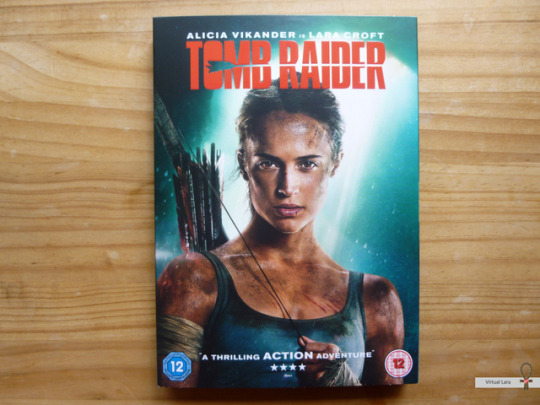
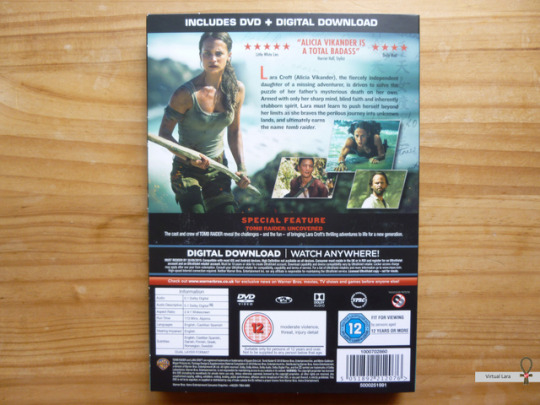
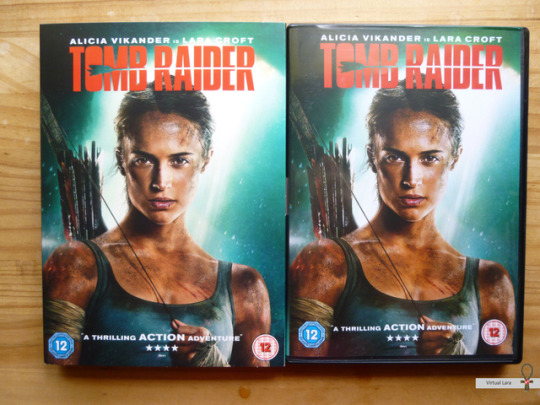
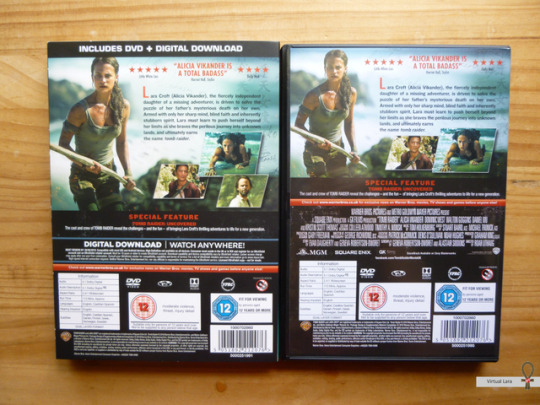
Tomb Raider
Release Date: 12 June (US & Can) | 16 July (UK) Blu-Ray
Director: Roar Uthaug
Producer: Graham King
Executive Producer: Patrick McCormick, Denis O'Sullivan, Noah Hughes
Production Companies: GK Films, MGM, Warner Bros
Score Composer: Tom Holkenborg
Running Time: Approx 113 minutes
Age Rating: 12
Main Cast: Alicia Vikander, Dominic West, Daniel Wu, Walton Goggins, Kristin Scott Thomas
Lara Croft goes in search for her father after discovering his secret message in a karakuri. His research takes her to Yamatai, where she has to overcome a sub-sect of Trinity, a team called Patna, led by Mathias Vogel.
There are various releases of the movie: Blu-ray, digital, 3D, 3D Blu-ray and 4K Blu-ray. It can also be found in a steelbook edition. The special features of this particular release is an interview with the cast and crew of the film.
This can be purchased cheaply, either physical or digital, although prices will change depending on the format.
4 notes
·
View notes
Text
Listen to Junkie XL's New Justice League Theme for the Snyder Cut
Listen to Junkie XL’s New Justice League Theme for the Snyder Cut
[ad_1]
Composer Thomas Holkenborg, aka Junkie XL, has teased his new theme for Zack Snyder’s Justice League. The composer shared the music during today’s glitchy part 2 of DC’s FanDome event. Snyder confirmed that Junkie XL would be back to finish the score for the long-awaited cut of the movie back in July, also confirming that Hans Zimmer is back. Junkie XL was on track to score the original…
View On WordPress
0 notes
Text
Listen to Junkie XL's New ‘Justice League’ Theme for the Snyder Cut
Listen to Junkie XL’s New ‘Justice League’ Theme for the Snyder Cut

Composer Thomas Holkenborg, aka Junkie XL, has teased his new theme for Zack Snyder’s Justice League. The composer shared the music during today’s glitchy part 2 of DC’s FanDome event. Snyder confirmed that Junkie XL would be back to finish the score for the long-awaited cut of the movie back in July, also confirming that Hans Zimmer is back. Junkie XL was on track to score the original version…
View On WordPress
0 notes
Photo
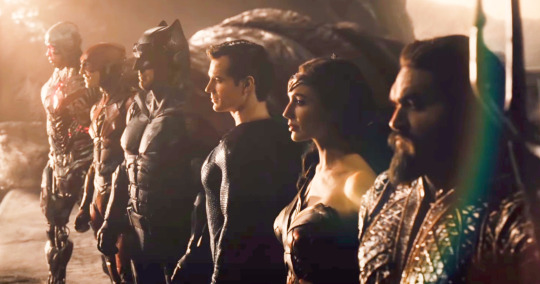
Listen to Junkie XL's New Justice League Theme for the Snyder Cut
Composer Thomas Holkenborg, aka Junkie XL, is currently working hard to finish up the score for Zack Snyder's Justice League.
https://movieweb.com/justice-league-snyder-cut-theme-junkie-xl/
0 notes
Text
ALITA: BATTLE ANGEL: Ed’s Very Important Thoughts on the Robert Rodriguez Anime Adaptation
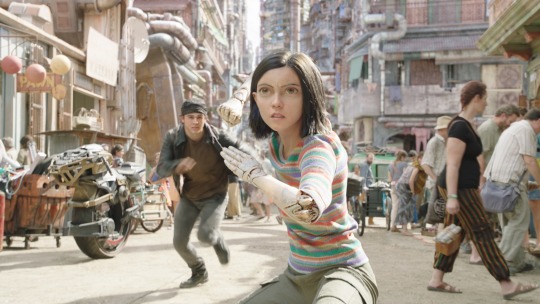
Before we get into my thoughts on the newest James Cameron-Jon Landau-Robert Rodriguez jam, let’s talk about science fiction. It’s a genre that has worked so well in novel form, as well as in comics and animation, but not always so much when it comes to live action films. You might wonder why that is, and it’s fairly simple: perception. A filmmaker’s vision of a futuristic world may or may not connect with how the viewer sees that world, especially when it comes to science fiction movie adapted from other forms.
That may be why you can watch a movie like Stanley Kubrick’s A Clockwork Orange (one of my lifelong personal faves) and accept the characters talking using strange, foreign slang (taken straight from the book, mind you) or enjoy the craziness of Luc Besson’s Valerian and the City of a Thousand Planets, while possibly not be in tune with visions of the future like those in Mortal Engines, Divergent, The Giver or any number of other future worlds.
That brings us to Alita: Battle Angel, a decades-long obsession of filmmaker James Cameron to adapt the popular Yukito Kishiro manga into a movie, although he is already well-entombed in making the next 500 Avatar movies, so he handed the directorial reigns to the equally able Robert Rodriguez.
If I’ve ever read any of the Battle Angel Alita manga, I don’t remember very much about it other than that it involved a cyborg girl who was REALLY good at fighting. Because of that, I probably wouldn’t know how well the film captures the story, characters or the environment. Even so, it’s not like there’s a ton of Manga adaptations to compare this to either, other than the disastrous Ghost in the Shell from a few years back and other ones that are equally bad.
Let’s see how much of the plot of this one I can share without making you just want to shut your mind off, as I nearly did while trying to endure this:
The movie takes place in the 26thCentury, 300 years after “The Fall,” a war that has created a post-apocalyptic world divided into two places – the Earth-based Iron City and the enormous city of Zalem, floating high overhead. A girl’s head falls from the latter down to a junkyard in Iron City where it’s found by Christoph Waltz’s Doctor Dyson Ido, a cybernetics expert who gives the girl a cyborg body he created for his late disabled daughter Alita. He gives the cyborg the name Alita (Rosa Salazar) and having no memory of her past, she looks at Iron City with a sense of wonder, especially when she meets the handsome Hugo (Keann Johnson), and they begin to bond. As others discover Alita’s existence, most notably the evil Vector (Mahershala Ali), she finds herself using her new skills and cyborg body to protect Hugo and Doctor Ido.
Obviously, there’s a lot more to the plot in terms of characters, and I couldn’t tell you which of them comes directly from the comics and which are made to look cool for the movie, but it’s surprisingly not too complicated a plot once you know all the players.

Christoph Waltz is surprisingly decent playing a kinder and gentler father figure, a bit like Geppetto to Alita’s Pinocchio, though he does get into the action, as he’s also a “Hunter-Warrior.” Mahershala Ali, on the other hand, gives such a stiff performance you may wonder if this movie will be his Norbit, the bad paying gig an Oscar-winning actor takes that comes out in the middle of awards season. (Then again, Jennifer Connolly is also pretty bad in this, and she’s also an Oscar winner.)
On top of that, Alita features another ridiculous performance by Ed Skrein, who I’m shocked still gets work despite being the worst aspect of Deadpool. He plays Zapan, the top Hunter-Warrior, a group of bounty hunters who seem to go after those who kill cyborgs for parts, whether they be human or cyborg themselves. You see, in Iron City, cyborg parts are a commodity with everyone clamoring for the best upgrades. Furthermore, everyone in Iron City has an exceedingly silly name to the point where when you’re introduced to the Hunter-Warriors “Screwhead” and “Dogmaster,” it’s almost impossible not to break out laughing.
Also big on this world is a sport called “Motorball.” Now if you were to ask me, “What sport is so popular in America that you can see it surviving until the 26thCentury?, I might tell you “baseball” or “football” or even “professional wrestling” – I would never have said, “roller derby.” That’s exactly what Motorball is, a form of futuristic roller derby involving cyborgs that the people of Iron City just eat up. Of course, Alita eventually joins up and is immediately targeted by the other cyborgs playing.
As silly as the film sometimes seems, everything is always delivered so seriously it’s hard to enjoy, and the cast in general is so lacking in the type of charm or personality that can make anyone other than Alita herself stand-out. If you think about some of cornier sci-fi movies like Total Recall or Robocop, what made them work is that you had charming or solid leads like Arnold Schwarzenegger or Peter Weller, and Rosa Salazar’s bright charm and big smile only goes so far. I also will freely admit watching a character with giant exaggerated eyes can be unnerving for at least the first hour. (I couldn’t decide which was creepier: Alita or the lady-dolls from Robert Zemeckis’ Welcome to Marwen.) Things get even skeevier when Alita’s body is replaced with that of an older woman and both her “maker/father” and Hugo make creepy comments about how much better she looks. Talk about a movie sending mixed messages when you have this powerful female character but the men around her still only admire her for physical attributes.
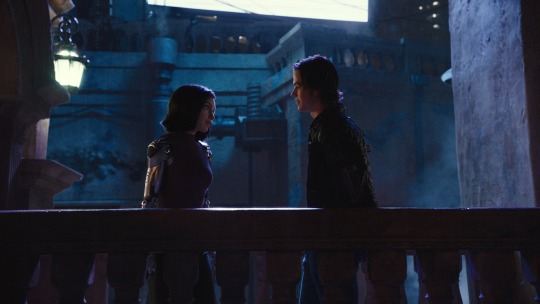
I don’t want to completely trash everything about Alita, because one place it excels is in the overall look of the movie (especially captivating in 3D) as well as in the action setpieces which are generally exciting and enjoyable despite the terrible dialogue that accompanies most of it. If you just want to watch cool stuff, there’s plenty of that as the film’s visuals are as impressive as anything in Blade Runner 2049 or other CG-heavy films. There’s no question Rodriguez and Cameron are masters at creating fully CG worlds populated entirely by CG characters and still making them easy to connect with.
That said, the weak writing and dialogue rarely help matters, leaving it relying heavily on the score by Thomas Holkenborg (aka Junkie XL) to inform the viewer how they should be feeling. As with Mortal Engines, you may wish there was a better movie to accompany his score, but even that seems to be far more earnest than necessary.
Even if the original manga was created way back in 1990, Alita winds up feeling derivative and filled with every cliché imaginable since it probably has inspired so many copycats. (I’m talking to you Elysium.)
As great as Alita might look, make no mistake that this is a very bad movie. I’m not even sure diehard fans of the Manga will be able to tolerate its constant stream of stoic silliness.
Rating: 5/10
0 notes